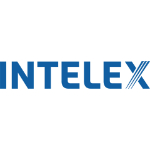TechnologyCounter provides genuine, unbiased real user reviews to help buyers make informed decisions. We may earn a referral fee when you purchase through our links, at no extra cost to you.
List of Best Emissions Management Software
Showing 1 - 8 of 8 productsEnablon is a leading software company that provides innovative solutions for sustainability, EHS, and risk management. For over 20 years, Enablon has been dedicated to helping organizations achieve their sustainability goals and maintain a safe worki...Read Enablon Reviews
Intelex is a leading software company that specializes in providing innovative solutions for businesses to thrive in todays fast-paced digital world. With a wide range of customizable software options, Intelex helps companies streamline their operati...Read Intelex Reviews
AQMIS Cloud is a solution for all your air quality management needs. With its versatile features and user-friendly interface, AQMIS Cloud offers a seamless experience to effectively monitor and analyze air quality data. Experience the power of techno...Read AQMIS Cloud Reviews
FLINTpro is a efficient and versatile software that streamlines your project management processes with ease. Say goodbye to tedious tasks and hello to improved productivity, thanks to FLINTpros user-friendly interface features. Let FLINTpro be your u...Read FLINTpro Reviews
Envirosoft is a leading software company that specializes in providing innovative solutions for environmental management. With a team of experienced professionals, we aim to empower organizations and individuals to make informed and sustainable decis...Read Envirosoft Reviews
Cority EHS is a top-rated software that has revolutionized the way companies manage their environmental, health, and safety processes. With its advanced technology and user-friendly interface, Cority EHS has become the leading choice for organization...Read Cority EHS Reviews
Locus is a latest software revolutionizing the way you manage, analyze, and optimize your location-based data. With its advanced features and user-friendly interface, Locus empowers businesses to make smart decisions and drive growth. Join the thousa...Read Locus Reviews
Figbytes the dynamic software revolutionizing data management. With its user-friendly interface features, Figbytes streamlines data organization and analysis for businesses of all sizes. Say goodbye to complex systems and hello to a more efficient wa...Read Figbytes Reviews
Figbytes the dynamic software revolutionizing data management. With its user-friendly interface features, Figbytes streamlines data organization and analysis for businesses of all sizes. Say goodbye to complex systems and hello to a more efficient wa...Read Figbytes Reviews
FLINTpro is a efficient and versatile software that streamlines your project management processes with ease. Say goodbye to tedious tasks and hello to improved productivity, thanks to FLINTpros user-friendly interface features. Let FLINTpro be your u...Read FLINTpro Reviews
Intelex is a leading software company that specializes in providing innovative solutions for businesses to thrive in todays fast-paced digital world. With a wide range of customizable software options, Intelex helps companies streamline their operati...Read Intelex Reviews
AQMIS Cloud is a solution for all your air quality management needs. With its versatile features and user-friendly interface, AQMIS Cloud offers a seamless experience to effectively monitor and analyze air quality data. Experience the power of techno...Read AQMIS Cloud Reviews
Locus is a latest software revolutionizing the way you manage, analyze, and optimize your location-based data. With its advanced features and user-friendly interface, Locus empowers businesses to make smart decisions and drive growth. Join the thousa...Read Locus Reviews
Enablon is a leading software company that provides innovative solutions for sustainability, EHS, and risk management. For over 20 years, Enablon has been dedicated to helping organizations achieve their sustainability goals and maintain a safe worki...Read Enablon Reviews
Cority EHS is a top-rated software that has revolutionized the way companies manage their environmental, health, and safety processes. With its advanced technology and user-friendly interface, Cority EHS has become the leading choice for organization...Read Cority EHS Reviews
- What Is Emissions Management Software?
- Top Reasons Why Businesses Need Emissions Management Software?
- What Are the Top Key Features of Emissions Management Software?
- What Are the Top Benefits of Emissions Management Software?
- What Are the Steps to Choose the Right Emissions Management Software?
- What Are the Types of Emissions Management Software for Different Industries?
- What Are the Technology Trends for Best Emissions Management Software?
- What Are the Deployment Options for Emissions Management Software?
What Is Emissions Management Software?
Emissions management software is a form of software that assists businesses in complying with environmental standards governing emissions and air quality. It collects, stores, analyses, reports, and monitors emissions data. Details on the volume of pollutants discharged, the time they were released, and the type of pollutant are typical examples of emissions data.
This program assists businesses in understanding the environmental impact of their operations and taking appropriate steps to minimize emissions. It also enables businesses to successfully manage their environmental efforts while remaining in compliance with current rules.
Furthermore, the program may contain features for simulating various scenarios, calculating and analyzing environmental variables, and reviewing reports and opt-in alarm messages. In brief, the best emissions management software assists organizations in meeting their emissions targets while also adhering to regulatory standards.
Top Reasons Why Businesses Need Emissions Management Software?
1. To ensure that environmental rules and regulations are followed.
2. To decrease air pollutants and mitigate potential environmental repercussions from their operations.
3. To monitor environmental performance and pollutant and greenhouse gas emissions.
4. To monitor progress over time and identify emission sources.
5. Identifying high-emitting sources and potential areas for improvement.
6. Establishing emission targets and goals, as well as measuring performance against them.
7. To forecast and analyse pollution levels in order to plan for impending activities.
8. Improve environmental awareness and long-term operations inside the organisation.
9. To discover possible cash benefits from improved energy efficiency.
10. To establish target emission limits for various processes.
11. Create low-cost emission strategies and solutions.
12. To make the most efficient and sustainable use of existing resources.
13. Produce comprehensive reports for stakeholders and customers.
14. To precisely track emissions in order to ensure that tax and reporting requirements are met.
15. Create emission reports in accordance with government standards.
What Are the Top Key Features of Emissions Management Software?
The top key features of Emissions Management Software include:
1. Automation: Calculate emissions automatically to ensure accuracy and compliance with applicable requirements.
2. Monitoring: Changes in emission levels should be monitored to ensure efficient and accurate reporting.
3. Reporting: Produce precise, customized reports in order to meet regulatory obligations.
4. Data Analysis: Analyse emission data to discover the potential for efficiency improvements.
5. Auditing: Ascertain that emissions reports are correct and in accordance with laws.
6. Compliance: Enforce regulatory compliance in all elements of operations for emission management.
7. Verification: Remotely validate emission data using third-party testing to assure accuracy and compliance with laws.
8. Tracking: Monitor changes in emission levels, data, and actions to ensure compliance.
9. Maps & Dashboards: To improve comprehension and supervision, visualise emission data with color-coded maps and graphical dashboards.
10. Mobile Access: Mobile device compatibility allows for remote data access and management.
What Are the Top Benefits of Emissions Management Software?
1. Improved Efficiency: Emissions management software assists firms in improving operational efficiency by finding and tracking possible areas for improvement in their operations. Businesses can then prioritise their environmental efforts and allocate resources to the most effective strategies.
2. Customization: Businesses can customise solutions to their specific needs using the best emissions management software. Setting environmental objectives, assessing performance and progress, and developing individualised plans to achieve goals are all part of this process.
3. Compliance: Emissions management software assists organizations in remaining in compliance with environmental requirements. This includes keeping track of all emissions-related actions to ensure that policies are followed.
4. Cost Savings: Businesses can decrease costs related to energy usage, emissions control, material handling, and hazardous waste disposal by controlling emissions efficiently.
5. Improved Transparency: Top emissions management software gives firms more visibility into their operations and the overall environmental impact of their operations.
What Are the Steps to Choose the Right Emissions Management Software?
1. Determine the features and capabilities that your emissions management software will require. Begin by compiling a complete list of features and determining which ones are most crucial for your requirements.
2. Investigate the available options. Examine numerous emissions software suppliers, paying attention to reviews, pricing plans, and features.
3. Contrast features and abilities. Compare the characteristics and capabilities of several vendors/providers to your list of requirements to discover which will satisfy your needs.
4. Contact references. Speak with current users of a software provider to gain more information and feedback about that service.
5. Evaluate pricing strategies. Make a preliminary assessment of the pricing plans supplied by the various vendors/providers and determine if they are within your budget.
6. Make your final decision. To make the final pick, compare the feature sets, customer comments, price plans, and other aspects of the final shortlist of vendors/providers.
What Are the Types of Emissions Management Software for Different Industries?
Different forms of top emissions management software are required by industries such as energy, manufacturing, automotive, petrochemical, agricultural, mining, and wood. Energy best emissions management software is intended to aid in the administration of energy efficiency, energy resources and points, emission kinds and credits, and energy reporting.
Manufacturing emissions software aids in the identification of pollution sources such as energy, water, and air emissions. It can also help with the monitoring of environmental performance criteria and operational implications. Automakers can use automotive emission management software to help them fulfil international emissions regulations.
It helps to cut fuel usage while limiting exhaust pollutants. Petrochemical emissions management software aids in the monitoring of petrochemical sector emissions, such as hazardous air pollutants (HAPs) and volatile organic compounds (VOCs). This programme can also track substances, set limits, and verify regulatory compliance.
Agricultural emissions management software assists the agricultural business in monitoring and managing emissions related to farm operations, such as wastewater treatment and manure and fertiliser handling. Mining emissions management software assists the mining industry in monitoring, tracking, and reporting emissions from mining activities.
The programme not only assists in identifying pollutant sources, but it may also offer data to determine emission limits, monitor performance, and provide feedback on measures implemented.
Finally, emissions management software for the timber sector assists forest operations in monitoring air emissions related to wood burning and the transport of wood products. It is intended to assist the sector in meeting regulatory standards while also improving overall environmental performance.
What Are the Technology Trends for Best Emissions Management Software?
Cloud computing, mobile device integration, and artificial intelligence (AI) are the top technology advancements for best emissions management software. Cloud computing allows users to access software remotely and improves scalability.
The integration of mobile devices simplifies the user experience. AI algorithms can assist in the automation of operations, the provision of predictive analytics, and the making of better real-time decisions.
Finally, certain emissions management software systems may employ Internet of Things sensors and automated procedures to improve the monitoring and management of emissions data.
What Are the Deployment Options for Emissions Management Software?
Emissions management software is often deployed on an enterprise (company-wide) scale. The programme can be installed on-site, in a virtual environment, over the Internet, or through a public or private cloud-based solution.
1. On-site deployment necessitates the installation of software on each computer in the organisation, which is then monitored and managed locally.
2. The entire system can be deployed on a hosted server using a virtual environment, and all users can access it securely over the internet.
3. Companies can acquire subscriptions to services that provide hosted top emissions management software (e.g., SaaS) via the Internet.
4. Finally, the software can be configured to run in the cloud, where it is housed in a public or private cloud and can be accessed remotely.








